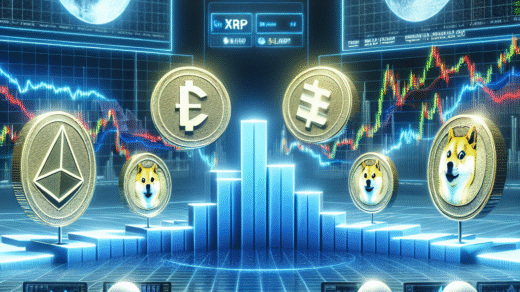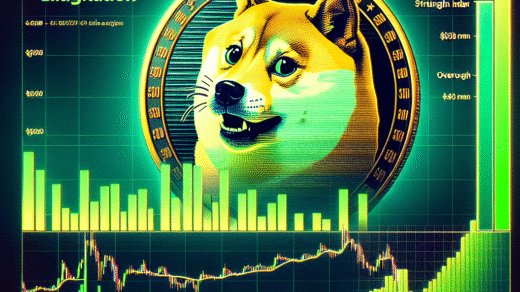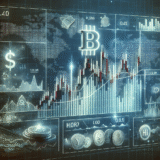“`html
The U.S. dollar index (DXY), which measures the value of the dollar against a selection of major fiat currencies, has recently shown signs of recovery after experiencing its worst six-month performance in decades. As analysts examine this notable bounce, they caution against expecting a full-blown comeback.
Understanding the Dollar Index Recovery
As of recent reports, the DXY has gained approximately 1.40%, climbing to a value of 98.30 after bouncing off a three-year low of 96.37, as tracked by TradingView. This recovery is characterized as a bullish technical breakout, as the index has successfully moved above the trendline connecting a series of lower highs since its peak in February.
The Implications of a Strong Dollar
A robust U.S. dollar often signals financial tightening on a global scale, leading to diminished risk appetite among investors. Historically, Bitcoin (BTC) and other cryptocurrencies have tended to move inversely to the dollar’s strength. However, the current breakout of the DXY appears to be a temporary technical correction rather than a sustained bullish trend.
Expert Insights: Short-term Gains vs. Long-term Trends
Marc Chandler, chief market strategist at Bannockburn Capital Markets and author of Making Sense of the Dollar, provides insight into the recent dollar performance. He notes, “The dollar’s first back-to-back weekly gain since mid-May has been supported by stronger-than-expected economic data and an uptick in U.S. interest rates.” Chandler highlights that the implied year-end rate in the Fed funds futures market has increased by nearly 25 basis points this month.
Future Projections for the Dollar
Analysts at ING predict that the dollar may experience further support in the coming months, particularly as the 14 basis points of easing priced in for the September contract unwinds. This forecast aligns with positive U.S. data and the uncertainty surrounding Japan’s upcoming elections.
“Retail sales and jobless claims exceeded expectations yesterday, providing additional support for a hawkish reevaluation of Federal Reserve rate cuts,” the analysts stated. They also expect the remaining 14 basis points priced in for September to gradually diminish, which could add pressure on the EUR/USD exchange rate.
Japan’s Upcoming Upper House Election: A Key Influencer
This Sunday’s Upper House election in Japan may be contributing to the recent upward trend of the DXY. According to analysts at ING, investor concerns about the ruling coalition potentially failing to secure a majority are amplifying political uncertainty and could impact Japan’s negotiation power with the U.S. regarding tariffs and fiscal stability.
Promised tax cuts and cash handouts from politicians ahead of the elections are likely to exacerbate ongoing fiscal challenges. “The ruling coalition needs to secure at least 50 out of 125 contested seats in order to maintain a majority in the Upper House. However, recent polls suggest that the Liberal Democratic Party and Komeito may not achieve this,” they noted.
Market Reactions and Future Predictions
Furthermore, Griffin Ardern, head of options trading and research at the crypto financial platform BloFin, argues that investors’ aversion to the Japanese yen may be short-lived. He indicates that while macroeconomic fundamentals in the United States have not significantly improved, recent data confirms a rebound in U.S. inflation. This, coupled with various legislative pressures, is likely to keep inflation expectations elevated.
The U.S. economy is also facing potential challenges from the recently approved OBBA (One Big Beautiful Bill), which is expected to increase the fiscal deficit by $3 trillion over the coming years. As uncertainties in Japan diminish, Ardern believes that the DXY’s performance may revert to a downward trend.
Conclusion: What This Means for Investors
In summary, while the U.S. dollar has shown a notable recovery, the outlook remains cautious. Analysts advise investors to keep an eye on upcoming economic data and geopolitical developments, particularly regarding Japan’s elections, which could have significant implications for both the dollar and global markets as a whole.
For cryptocurrency investors, understanding the dynamics between the dollar and Bitcoin is crucial. Historical trends suggest that an increasing dollar value may not bode well for crypto prices, making this a critical period for those looking to navigate the complexities of the market.
For more insights on cryptocurrency investments, check out our guides on how to buy Bitcoin, how to buy cryptocurrency, and Bitcoin ETFs.
“`
Meta Description: “Explore the recent recovery of the U.S. dollar and what it means for investors and the cryptocurrency market. Analysts warn against expecting a full comeback as geopolitical factors, including Japan’s elections, could influence future trends.”







